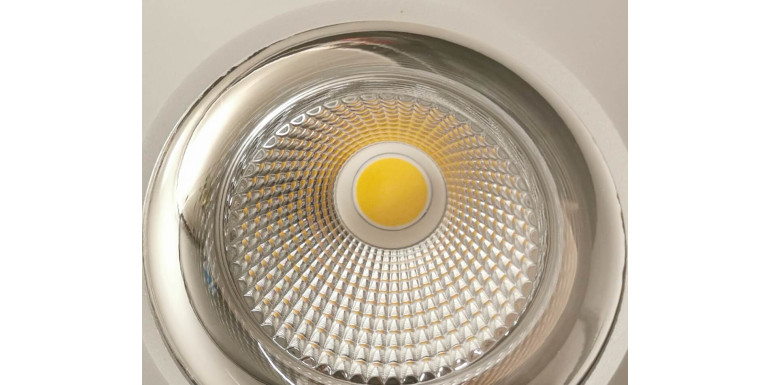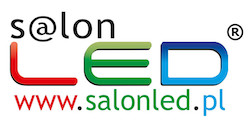-
Why choose gold LED pendant lights? 12/29/2025 22:06:25Linear LED Pendant Light – Where Does It Work Best? 12/18/2025 12:19:09Voltage in LED Lighting – 230V, 12V, 24V or 48V? Comparison and Applications 12/16/2025 18:24:10Why is LED lighting technology becoming more and more popular?02/19/2020 19:22:12

Advantages of LED lighting, which you won't find in traditional lighting solutions
Here are the 9 biggest advantages of lighting technology with light emitting diodes (LEDs). The following entry has been structured in a way that lists the benefits of technology, starting with the most important elements. From 2012 we observe dynamic and continuous changes on the lighting market and the growing popularity of LED sources. If anyone else has doubts about buying such lighting, we hope that this article will help you make the right decision ...
1. LED light life
One of the most important advantages of LED lighting is undoubtedly the lifetime that this technology has to offer. The estimated life span of LED lighting is from 50,000 to 100,000 operating hours. This durability is 4 times greater than most halogen, fluorescent and even sodium lamps. What's more, LED life is up to 40 times longer than conventional older date bulbs.
Less frequent exchange equals two obvious aspects. Lower maintenance costs and lower costs associated with spare parts during equipment wear. Bulbs simply do not fail for a very long time.
2. LED energy efficiency
General LEDs consume very small amounts of energy. The statistics to look for when comparing the energy efficiency of different lighting solutions are determined by the amount of light generated per watt consumed by a light bulb. According to modernization, LED lighting can improve the overall energy efficiency of the object by up to 60%. Depending on the existing lamps and specific LEDs installed, savings in energy consumption can reach up to 90%.
3. Increased security via LEDs
Safety is perhaps the most overlooked advantage when it comes to LED lighting. The biggest threat in lighting is the emission of heat. As it turns out, LEDs almost do not emit heat, while traditional light bulbs process up to 90% of the total energy used to power them. Almost all the power they process is converted into heat. This means that with traditional incandescent lighting, only 10% of the energy is actually converted into light. This makes traditional incandescent bulbs extremely inefficient when compared to LED lighting. In addition, LEDs, due to the fact that they consume less energy in general, are much safer in low voltage systems.
4. LED lights are physically small
The actual LED device is very small. Their size makes LEDs very well adapted to an infinite number of lighting applications. The various applications of LEDs cover a wide spectrum, ranging from lighting bulletin boards, traffic signs, and residential applications.5. LEDs generate directional light emission
LED technology only emits light within 180 degrees. Any other type of light emits a 360 degree source around the source. 360-degree emissions require additional reflection or redirection of the light source. This increases the overall system costs and generates inevitable financial losses. The device powered by this type of light then becomes much less efficient. A good example can be traditional bulbs used on home chandeliers. The light of such a bulb is emitted both towards the room and the ceiling. The problem is that your goal is to illuminate the room, not the ceiling of the apartment. LEDs completely solve this problem and return savings in the overall efficiency of the energy system.
6. LEDs have an amazing variety among the available aesthetic models
Because the LEDs are so small that they can be used in virtually every possible physical setting. They can be bundled to replace traditional light bulbs or used as small lighting devices along certain objects. Linear, perpendicular or parallel lighting is possible. The only limit is our imagination.
7. Dimmable LED lighting
LEDs can operate in virtually any percentage of their power. It is noteworthy that dimming requires equipment specific to LED lighting. This means that we will not be able to use other traditional lighting technology on it. Another advantage of LEDs at less than full power is the fact that they become even more efficient as the light intensity decreases. It also increases the overall life of the equipment itself by reducing its operation.
8. LEDs ensure immediate switching on and have no trouble switching frequently
The LEDs turn on and off immediately. There is no warm-up period as for metal halide lamps. In addition, frequent switching does not degrade the life of the device.
9. LEDs produce near-zero UV emissions
LED lights produce almost all light through the visible spectrum. Only a small part comes from infrared and ultraviolet. This means that LEDs are a safe source of lighting for objects sensitive to UV radiation. They can be used to illuminate, for example, works of art that are damaged when exposed to ultraviolet emissions.
Menu
- +Outdoor lighting
- +Indoor lighting
- +Wall LED lamps
- Line light LED
- LED profiles ALU
- +Track system
- +LED ceiling lamps, hanging and surface-mounted
- +Ceiling covers
- +LED plafonds
- LED recessed downlights
- +Hanging lamps LED
- Ceiling spotlights and spots
- Ceiling fans LED
- LED lights for paintings
- Starry Sky
- +LED floor lamps
- LED table and desk lamps
- Living room
- Bedroom
- Dining room
- LED bathroom lighting
- LED kitchen lighting
- LED stairs lighting
- +LED bulbs
- All manufacturers
- Prices drop
- New Products
- Bestseller




